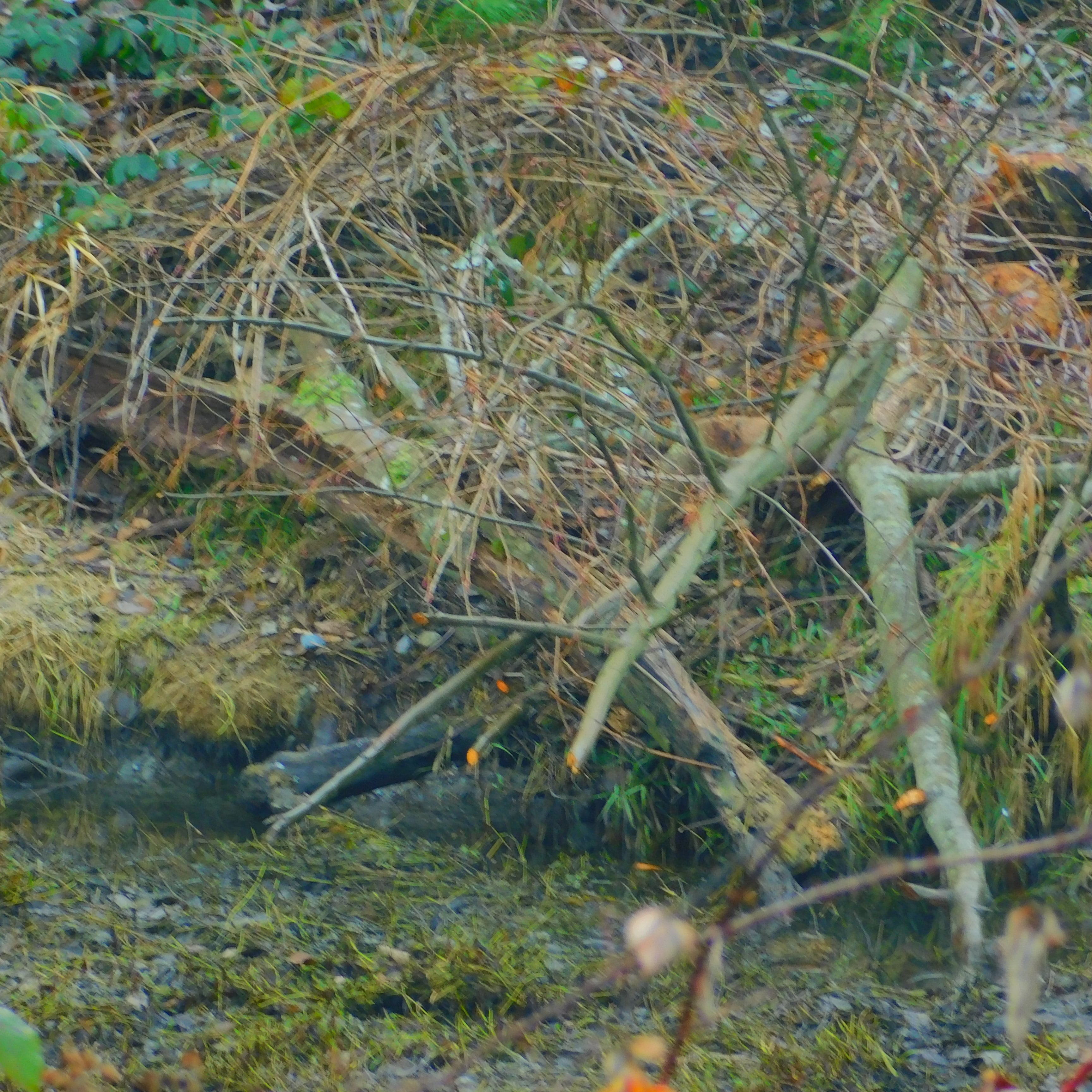Beavering Away in the Marsh
by Marcia Wilson

Something’s swimming in the Flett.
The college wetlands are full of the world’s largest rodent. This is a 2-part appreciation post for the North American Beaver, a not-so-small animal that played a large role in the development of Canada and the United States. Join this writer for a tour of some of the beaver’s more surprising facts:
Big dam rodents
Literally. Beavers are the largest surviving rodents in the world, with the biggest ones topping out at 110 pounds/50 kilos. For perspective, that is the weight of an adult Great Dane.
Their Ice Age relatives were even bigger—think as large as a grizzly bear. The Abenaki say that the powerful being in charge of watching the earth, Gluskab, shrank the huge animals down to a smaller size because their large size was too destructive, but many people will agree that any rodent that tops a hundred pounds is no lightweight.
Beavers cannot drown
It sounds like science fiction, but it is a fact. When beaver dive underwater, their lungs automatically seal shut to keep from drowning. Without a way to surface, they asphyxiate rather than drown. This usually happens when they are trapped under winter ice, underwater hazards, and certain traps. Unfortunately for the beaver, this is not a quick death as they are designed to stay underwater as long as possible without breaking surface. It can take 20-35 minutes to die in underwater traps, which makes the inherent cruelty of the traps a source of contention among trappers and animal rights activists alike. Hunters have pointed out that underwater traps risk contaminating the meat, making it unfit for human consumption. One solution is live traps and relocation for “nuisance animals,” but there is a considerable obstacle to this solution for animal control: not all states permit wildlife relocation.
Beavers = water squirrels

Squirrels are not the only animals that store food for winter. As the seasons chill, beaver create feed piles. These are caches of edibles harvested and towed to a short distance from their lodge. The sudden uptick in felled trees and shrubs along Flett Creek is a good example of feed pile harvesting. In Pond #3 upstream from the CPTC side of the wetlands, a collection of red alder poles stick out of the water. Uninterrupted, the Flett’s beaver will slowly whittle down this pile of wood until it is all gone.
“The Beaver is valued because it has the gift of intelligence. ‘It is the Beaver who taught the Dene how to store and ration food,’ said George Blondin in 1991”—Trad. Food Fact Sheets, Canada. This source was taken from a government website for nutrition in Canada.
Heavy metal beaver
Or, their teeth are metal. Their famous buck teeth gain an orange stain from the metal in their tooth enamel, specifically iron and magnesium.
These teeth are more resistant to acidic decay than even teeth treated with fluoride. This discovery has researchers excited for the possibilities in dental health.
In a related-to-metal-and-teeth fashion, Anglo Saxon burial mounds have been found with gold-wrapped beaver teeth amulets, a reflection of the animal’s importance to the people.
You are what you eat
Beaver meat is so tasty, many hunters consider the pelts an incidental bonus. A popular description goes:
“Similar to elk or bison, beaver meat has a deep, woodsy character without any off-flavors, and is lean but succulent.”
Minus these glands, all parts of the beaver are edible or useful in some way.
Glands around the anus provide castoreum, an oily, waxy stuff used for thousands of years in medicines, foods, folk-cures and perfumes. An ancient name for beaver was Kastor, after Kastor and Pollux (one of the twins in the astrological sign of Gemini). Kastor was the twin of healing and pharmacology.
Castor is related to castrate. The testicles of the male beavers are inside the body, and folklore built up around the belief that the animal castrated itself to escape gland-hunting humans.

Today, a limited amount of castoreum is used. That is mostly for scents and rare flavorings, such as Tamworth whiskey. Luckily, few of us will unknowingly ingest beaver products at the table—so long as we read the labels!
Next Week: The Army Corps of Beavineers, or, how building dams isn’t the best trick.